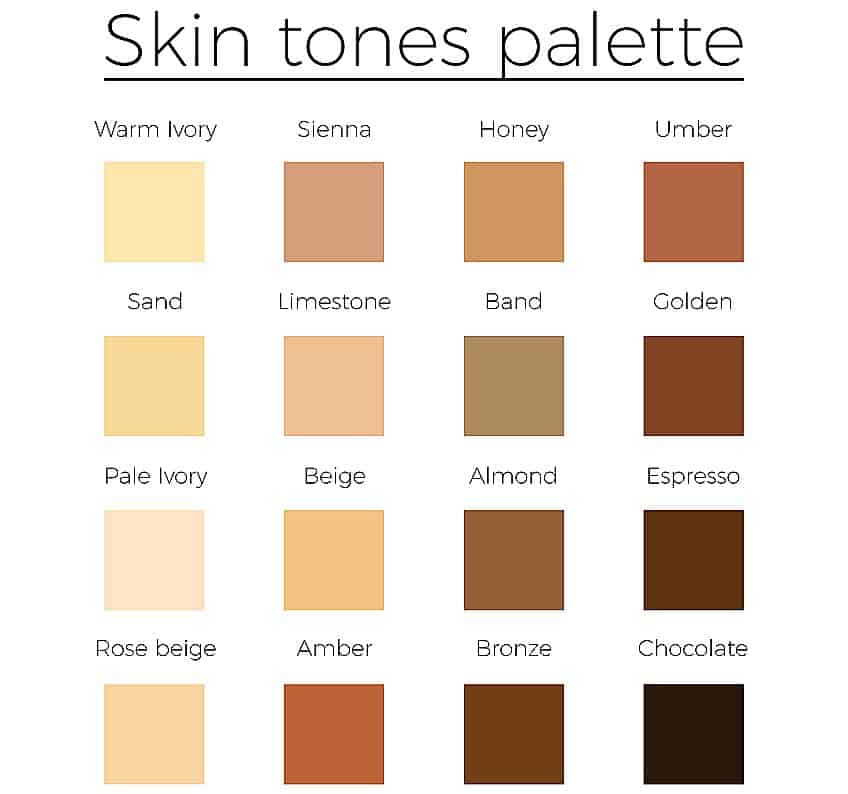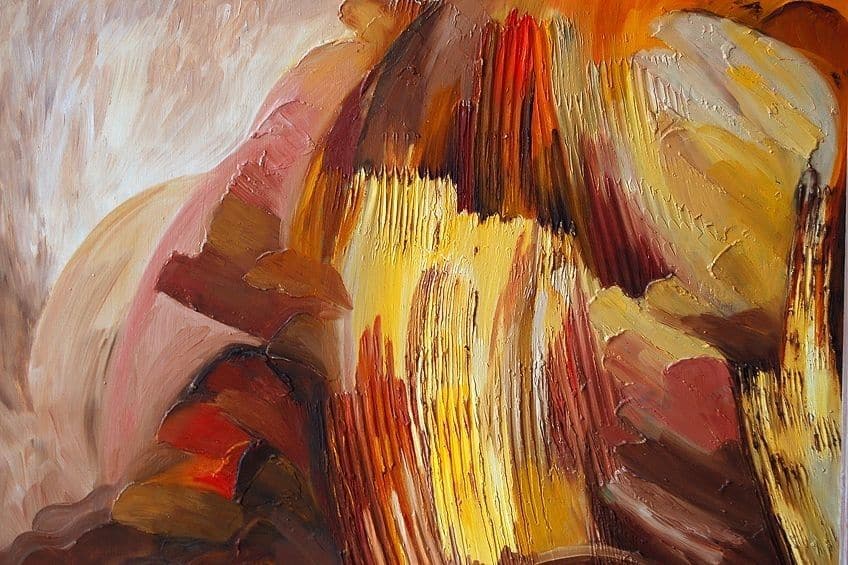How to Make Skin Color – Tutorial on Painting Skin Tones
This post may contain affiliate links. We may earn a small commission from purchases made through them, at no additional cost to you.
Skin color is often used in painting. Skin can be seen particularly when painting portraits, but also in many paintings that show everyday scenes. In this guide, we’ll give you tips on how to make skin color paint as realistically as possible.
Table of Contents
Why is Mixing Skin Color so Difficult?
Green tones for grass and blue tones for sky or water are easy to mix realistically, but skin tones are not so easy to mix. So, why are skin tones so difficult to mix realistically and how can we make it easier?
Skin tones are very complex colors. To create a skin tone, it is not enough to simply mix two colors. To make the color look realistic, you need to mix several colors. Also, you must remember that no two people have exactly the same skin tone as another. Therefore, you should resist the temptation to use a pre-made skin tone for everything. Knowing how to make skin color paint is essential for any artist trying to achieve realistic natural scenes.

Creating Skin Color With the Primary Colors
First, you can mix the three primary colors red, yellow, and blue together in equal parts to obtain a brown base color as a reference. This color is the starting point for your further blends because you can now further adjust this flesh tone. You can either make it darker or lighter, or cooler or warmer. To lighten the color, you can add Titanium White.
If you want to paint a portrait or a person, we recommend that you adjust the colors in the same way as when painting a landscape or a still life. To do this, first mix the desired color on your palette and then pick up the color with the brush. Then hold the colored brush next to your template. This way you can see if the color matches your desired tone or if more colors need to be added.
Advanced Skin Tone Painting
Once you’ve mastered the above method for mixing skin tones, you can move on to the next steps for achieving more complex shades.

Mix Shadows and Highlights into the Skin Tones
Once you find your desired flesh tone, you can create more similar tones. During this process, you can use black to your advantage. Mix a number of variations of your original skin tone with black and white paint so that you have different related tones in your repertoire. You can then use these to create highlights or shadows in your artwork.
Creating Blush tones
If you want your painted skin to look a little blushed, you should not simply paint red or pink over the skin tone. Instead, it is recommended that you create a new color tone for this purpose. Mix some red color into your usual skin tone to create a natural blush.

Paint Skin Color in Tinted Light
Mix your base skin tone with each of the three primary colors. The blends may look odd on your palette, but the flesh color in your painting can reflect the colors of the painted scene. For example, if your figure is standing by a blue curtain, you can give the lights or skin a blue shadow. This way you can make your painting look even more realistic.
How to Make Skin Color With Acrylic Paint
There is not just one flesh color tone, because the skin of each person has a very individual hue. Skin color can appear pink, be greenish, or even go a little into the blue. The shady parts of the body or head can even look almost black. You have certainly seen in paintings of famous artists that they have painted blue, red, green or purple color directly on the skin.
Perhaps it is precisely because of the difficulty of creating the perfect skin tone that many painters do not venture into portraits or nude painting. Just try mixing different skin tones yourself. Only the use of different skin colors gives your artwork a lively effect.
Learning how to make skin color with acrylic paint is fairly easy. If you use acrylic paint, you should note that it appears somewhat darker when dry than when wet. Therefore, it is advisable to mix the paint a little lighter. Mixing a specific shade of acrylic paint can be complicated. If you want to use a particular color for a larger piece or series, you should make a note of which colors you used for mixing, or preferably mix a large amount of the color at once so that you have enough on hand.
White paint can be used effectively to blend skin tones, while black paint, on the other hand, should be used sparingly. This is because it can lead to a greenish or muddy hue when combined with yellow skin tone colors. If you need a darker skin tone, it is better to add the same small amount of each of the primary colors instead of black paint. Try to check out a color mixing chart for acrylic paint.

Mixing Skin Color With Watercolor
The same color tone can be created with different possibilities. The option you use will depend mainly on the color palette you have available. To mix an orange skin tone, you can use different analogous colors, i.e. those that are close to each other on the color wheel. Just use warm or even cooler red, yellow and brown tones.
The following color combinations can usually be used to create appealing skin tones. One of the most popular colors to mix in a skin tone is yellow ocher. A beautiful skin tone can be created from this in combination with various red tones such as Pyroll crimson or scarlet or burnt amber.
To tone down the skin tone, a cool blue complementary color such as cobalt blue or phtahalo blue and in some cases Paynes gray is suitable.
The best watercolor painting technique for painting realistic skin colors is the glazing technique. You build up your painting gradually, starting with the lightest tones. By adding several layers of color in this way, you’ll give your artwork a certain depth as well as an interesting texture.

Frequently Asked Questions
How Do I Mix Skin Color With Acrylic Paints?
First, mix yellow and red color to an orange and add it to the brown tone. Then add a little blue color. Experiment with the color until you are satisfied with the result. You can follow a skin color mixing chart as a reference.
What Colors are Used to Make Skin Color?
When mixing skin color, all you need are the three primary colors and some white to change the shade. Using these colors can create a wide range of different skin tones.
How Do You Make Dark Skin Color?
Darkening skin tones shouldn’t always be done with black, as this can cause a muddy effect. Rather darken the skin color by adjusting the primary color to be darker. Adding more blue or even purple will work well. USe a skin color mixing chart to find which darker shades are used.
Knowing how to make skin color scares a lot of painters. However, with the right understanding and experimentation, learning how to make skin color paint perfectly can be easy. Simply follow the basic principles above and you will be able to create various natural skin color tones quickly and efficiently.








